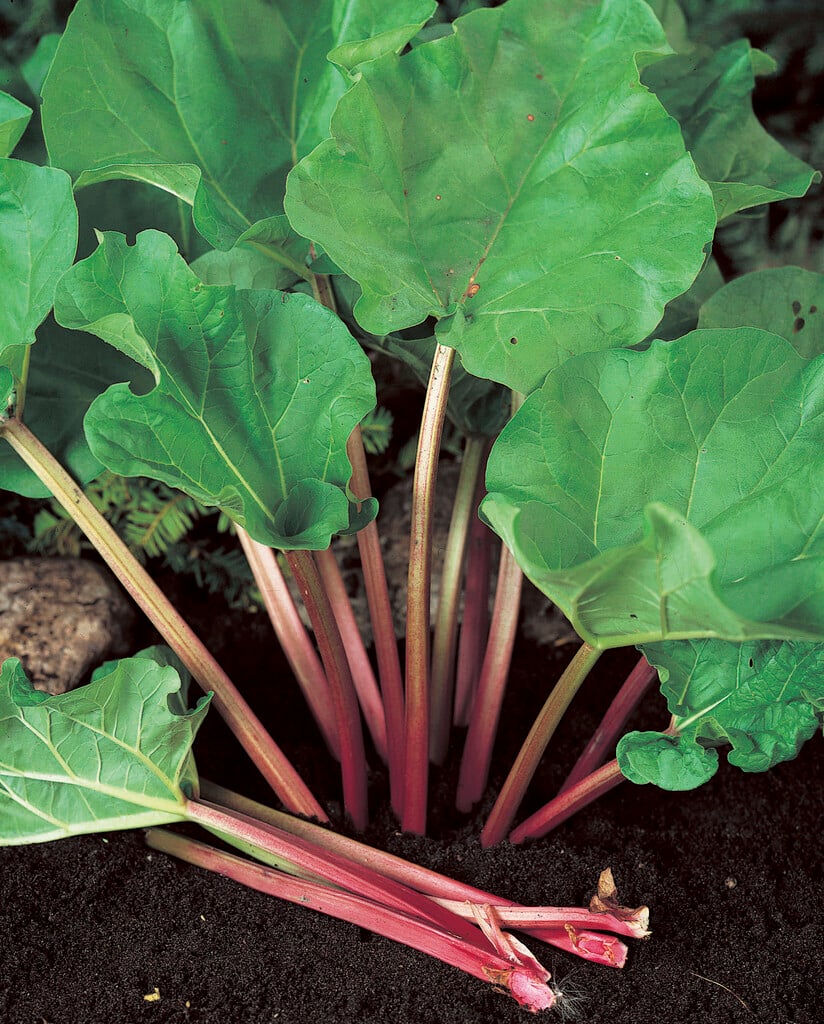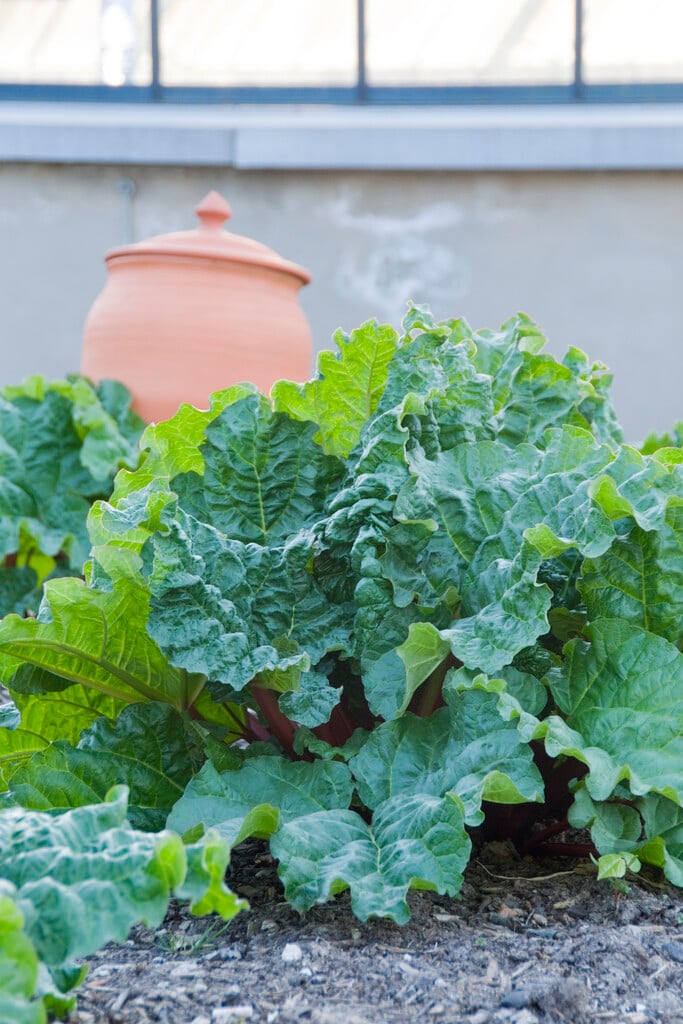Rheum rhabarbarum
wavy-leaved rhubarb
A large herbaceous perennial which overwinters as a short crown, and in spring produces triangular to heart-shaped dark green leaves with strongly wavy edges, held on thick, angular, hollow reddish stems. In mid summer, dense panicles of small yellow-white or greenish-white flowers are held on upright stems above the foliage, followed by flat, tan-coloured seeds. This species may have been involved in the parentage of the hybrids now used as culinary rhubarb
Size
Ultimate height
1–1.5 metresTime to ultimate height
2–5 yearsUltimate spread
1–1.5 metresGrowing conditions
Moisture
Moist but well–drainedpH
Acid, Alkaline, NeutralColour & scent
| Stem | Flower | Foliage | Fruit | |
| Spring | Green Red | Green | ||
|---|---|---|---|---|
| Summer | Green Red | White Yellow Green | Green | |
| Autumn | Green Red | Green | ||
| Winter |
Position
- Full sun
- Partial shade
Aspect
East–facing or South–facing or West–facing
Exposure
Exposed or Sheltered Hardiness
H6Botanical details
- Family
- Polygonaceae
- Native to GB / Ireland
- No
- Foliage
- Deciduous
- Habit
- Bushy
- Potentially harmful
- Harmful if eaten. Wear gloves and other protective equipment when handling Pets: Harmful if eaten - for further information and contact numbers regarding pets, see the HTA guide to potentially harmful plants
- Genus
Rheum are robust rhizomatous herbaceous perennials with large, simple or palmately lobed leaves and tall leafy stems bearing large panicles of tiny flowers
- Name status
Correct
- Plant range
- China Mongolia Russia
How to grow
Cultivation
Grow in moist but well drained soil. Mulch with manure in spring; avoid covering the crown. Keep watered in dry summers. See rhubarb cultivation for more detailed advice
Propagation
Propagate by seed or by division
Suggested planting locations and garden types
- Architectural
- Cottage and informal garden
Pruning
Deadhead spent flower spikes unless seed is required, cut back faded leaves at the end of the season
Pests
Diseases
May be susceptible to crown rot, honey fungus and virus diseases
Love gardening
Sign up to receive regular gardening tips, inspiration, offers and more
View our Privacy Policy
Get involved
The Royal Horticultural Society is the UK’s leading gardening charity. We aim to enrich everyone’s life through plants, and make the UK a greener and more beautiful place.

